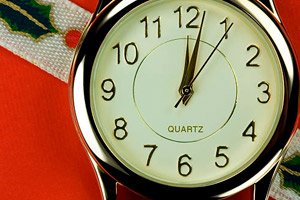
All iLive content is medically reviewed or fact checked to ensure as much factual accuracy as possible.
We have strict sourcing guidelines and only link to reputable media sites, academic research institutions and, whenever possible, medically peer reviewed studies. Note that the numbers in parentheses ([1], [2], etc.) are clickable links to these studies.
If you feel that any of our content is inaccurate, out-of-date, or otherwise questionable, please select it and press Ctrl + Enter.
Study shows disrupted sleep increases risk of suicide and homicide
Last reviewed: 02.07.2025
 ">
">An analysis by researchers in the Department of Psychiatry at the University of Arizona College of Medicine in Tucson found that the risks of death from suicide and homicide peak at night, with staying up all night, age, alcohol use and relationship conflict being particularly common contributing factors.
Nearly 19% of suicides and 36% of homicides occur at night. Suicide and homicide have little in common, but their highly consistent nocturnal risk patterns suggest a common feature: nighttime wakefulness.
"Disrupted sleep can acutely impair rational thinking, which can lead to impulsive behavior in vulnerable individuals," said study first author Andrew Tubbs, MD, a researcher in the Sleep and Health Program at the University of Arizona College of Medicine in Tucson, Department of Psychiatry.
"Our analysis of 15 years of US data found that there is a fivefold risk of suicide and an eightfold risk of homicide between 2 and 3 a.m. when accounting for the number of people who are awake and capable of suicide or homicide."
The article, “Suicide and Homicide Risk Peaks at Night: Results from the National Violent Death Reporting System, 35 States, 2003–2017,” was published in the Journal of Clinical Psychiatry.
"The fact that these nocturnal risk patterns apply to both suicide and homicide is striking," said senior study author Michael Grander, PhD, associate professor of psychiatry, director of the Behavioral Sleep Medicine Clinic, and a member of the BIO5 Institute.
"In our review of more than 78,000 suicides and 50,000 homicides, we can find some insight into why nighttime wakefulness - what we call 'mind after midnight' - carries a clear risk for dysregulated behavior."
The authors' "after-midnight mind" hypothesis suggests that nighttime wakefulness impairs the brain's complex decision-making functions and reduces rational thinking at a time when negative mood is at its peak, positive mood is at its lowest, and risk/reward processing is distorted.
The results supported this hypothesis. Nighttime risk was higher among adolescents and young adults, people who were intoxicated, and those who were experiencing ongoing conflict with a partner, but not among those who used cannabis or were depressed.
People aged 15 to 24 experienced a three-fold increase in the risk of suicide at night, while the unexpected risk of suicide was seen among older people at 6 a.m. Homicide risk did not vary by age, although young people made up more than half of all homicide victims.
“Few studies have looked at time trends in violent crime,” Tubbs said. “Future research could clarify what exactly is going on in the brain that predisposes people to such risks, and whether evidence-based strategies to improve sleep and reduce nighttime waking can help reduce the risks and prevent these tragic outcomes.”
